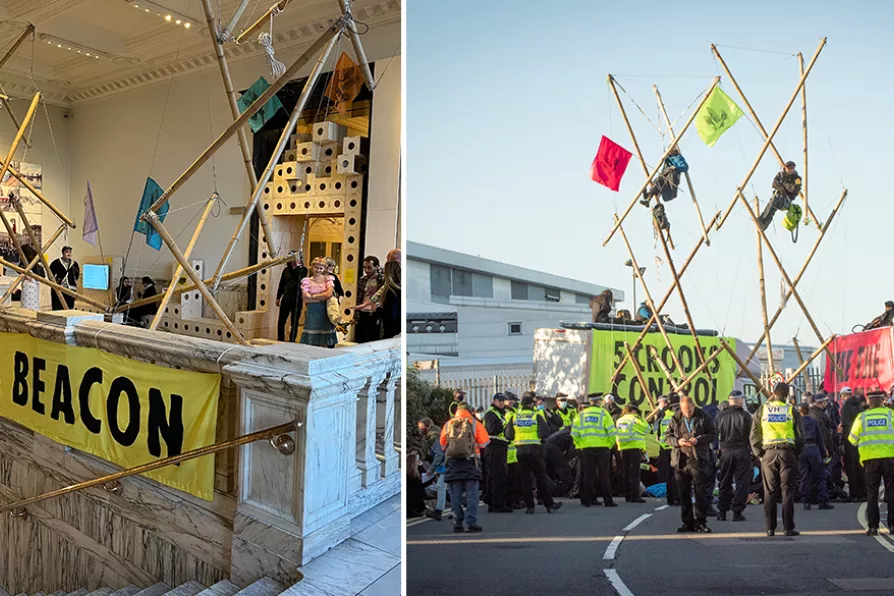JOE GILL speaks to the Palestinian students in Gaza whose testimony is collected in a remarkable anthology

 (L) The exhibition Barricade & Beacon showing the "tensegrity" towers at the V&A, London, September 2024; (R) The towers in action at Murdoch's Newsprinters presses at Broxbourne in Hertfordshire, September 2020. Demonstrators have accused the News Corp papers of failing to report on climate change.
[Tom Hardy/Gareth Morris]
(L) The exhibition Barricade & Beacon showing the "tensegrity" towers at the V&A, London, September 2024; (R) The towers in action at Murdoch's Newsprinters presses at Broxbourne in Hertfordshire, September 2020. Demonstrators have accused the News Corp papers of failing to report on climate change.
[Tom Hardy/Gareth Morris]
LAST month, the Victoria and Albert museum hosted the London Design Festival, which examined “how design can shape a space, bring people together and foster rituals, through a series of installations exploring global cultures across the museum.”
The installation Barricade and Beacon, presented by the V&A and RIBA in collaboration with Studio Bark, explored the intersection between architecture and activism and centred around Extinction Rebellion’s creative and thought-provoking designs and photography. At its heart were two of the bamboo “tensegrity” (a portmanteau of tension and integrity) towers specifically designed to thwart arrests, made by architect Julian Maynard Smith and engineer Morgan Trowland.
Maynard Smith described the thinking behind them: “We started using Bamboo tripods [in 2019]. We put a structure up in Oxford Circus – three tripods with a tripod on top. But I never found the tripod a very elegant structure and the police can just drive a forklift up to it and arrest the activists. With the tensegrity towers, you can be right in the middle of them and the police can't get to you. In the frame of XR you want to take over a space as long as possible — and make it difficult for the police to take you away.”














